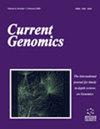DLC-ac4C:基于DenseNet和双向LSTM方法的人mRNA n4 -乙酰胞苷位点预测模型
IF 1.4
4区 生物学
Q4 BIOCHEMISTRY & MOLECULAR BIOLOGY
引用次数: 0
摘要
简介:N4乙酰胞苷(ac4C)是一种高度保守的核苷修饰,对生物体免疫功能的调节至关重要。目前,ac4C的鉴定主要是通过生物学方法来实现的,这可能是耗时和费力的。目的:据我们所知,虽然ac4C基因座预测的计算方法有几种,但它们构建的模型性能较差,使用的网络结构相对简单,存在网络退化的缺点。本研究旨在通过提出基于集成深度学习的预测模型来改善这些局限性,以更好地帮助识别ac4C位点。方法:在本研究中,我们提出了一个新的集成深度学习预测框架DLCac4C。首先,基于C2编码、核苷酸化学性质(NCP)编码和核苷酸密度(ND)编码三种特征编码方案对RNA序列进行编码。其次,使用一维卷积层和密集连接卷积网络(DenseNet)学习局部特征,使用双向长短期记忆网络(Bi-LSTM)学习全局特征。第三,引入通道注意机制来确定序列特征的重要性。最后,采用同态积分策略限制了模型的泛化误差,进一步提高了模型的性能。结果:DLC-ac4C模型对独立检测数据的敏感性(Sn)、特异性(Sp)、准确度(Acc)、Mathews相关系数(MCC)和曲线下面积(AUC)分别为86.23%、79.71%、82.97%、66.08%和90.42%,均有较好的预测效果,显著优于现有方法的预测精度。结论:我们的模型不仅结合了DenseNet和Bi-LSTM,而且利用通道注意机制从序列角度更好地捕捉隐藏信息特征,能够更有效地识别ac4C位点。本文章由计算机程序翻译,如有差异,请以英文原文为准。
DLC-ac4C: A Prediction Model for N4-acetylcytidine Sites in Human mRNA Based on DenseNet and Bidirectional LSTM Methods
Introduction: N4 acetylcytidine (ac4C) is a highly conserved nucleoside modification that is essential for the regulation of immune functions in organisms. Currently, the identification of ac4C is primarily achieved using biological methods, which can be time-consuming and laborintensive. In contrast, accurate identification of ac4C by computational methods has become a more effective method for classification and prediction Aim: To the best of our knowledge, although there are several computational methods for ac4C locus prediction, the performance of the models they constructed is poor, and the network structure they used is relatively simple and suffers from the disadvantage of network degradation. This study aims to improve these limitations by proposing a predictive model based on integrated deep learning to better help identify ac4C sites. Methods: In this study, we propose a new integrated deep learning prediction framework, DLCac4C. First, we encode RNA sequences based on three feature encoding schemes, namely C2 encoding, nucleotide chemical property (NCP) encoding, and nucleotide density (ND) encoding. Second, one-dimensional convolutional layers and densely connected convolutional networks (DenseNet) are used to learn local features, and bi-directional long short-term memory networks (Bi-LSTM) are used to learn global features. Third, a channel attention mechanism is introduced to determine the importance of sequence characteristics. Finally, a homomorphic integration strategy is used to limit the generalization error of the model, which further improves the performance of the model. Results: The DLC-ac4C model performed well in terms of sensitivity (Sn), specificity (Sp), accuracy (Acc), Mathews correlation coefficient (MCC), and area under the curve (AUC) for the independent test data with 86.23%, 79.71%, 82.97%, 66.08%, and 90.42%, respectively, which was significantly better than the prediction accuracy of the existing methods. Conclusion: Our model not only combines DenseNet and Bi-LSTM, but also uses the channel attention mechanism to better capture hidden information features from a sequence perspective, and can identify ac4C sites more effectively.
求助全文
通过发布文献求助,成功后即可免费获取论文全文。
去求助
来源期刊

Current Genomics
生物-生化与分子生物学
CiteScore
5.20
自引率
0.00%
发文量
29
审稿时长
>0 weeks
期刊介绍:
Current Genomics is a peer-reviewed journal that provides essential reading about the latest and most important developments in genome science and related fields of research. Systems biology, systems modeling, machine learning, network inference, bioinformatics, computational biology, epigenetics, single cell genomics, extracellular vesicles, quantitative biology, and synthetic biology for the study of evolution, development, maintenance, aging and that of human health, human diseases, clinical genomics and precision medicine are topics of particular interest. The journal covers plant genomics. The journal will not consider articles dealing with breeding and livestock.
Current Genomics publishes three types of articles including:
i) Research papers from internationally-recognized experts reporting on new and original data generated at the genome scale level. Position papers dealing with new or challenging methodological approaches, whether experimental or mathematical, are greatly welcome in this section.
ii) Authoritative and comprehensive full-length or mini reviews from widely recognized experts, covering the latest developments in genome science and related fields of research such as systems biology, statistics and machine learning, quantitative biology, and precision medicine. Proposals for mini-hot topics (2-3 review papers) and full hot topics (6-8 review papers) guest edited by internationally-recognized experts are welcome in this section. Hot topic proposals should not contain original data and they should contain articles originating from at least 2 different countries.
iii) Opinion papers from internationally recognized experts addressing contemporary questions and issues in the field of genome science and systems biology and basic and clinical research practices.
 求助内容:
求助内容: 应助结果提醒方式:
应助结果提醒方式:


